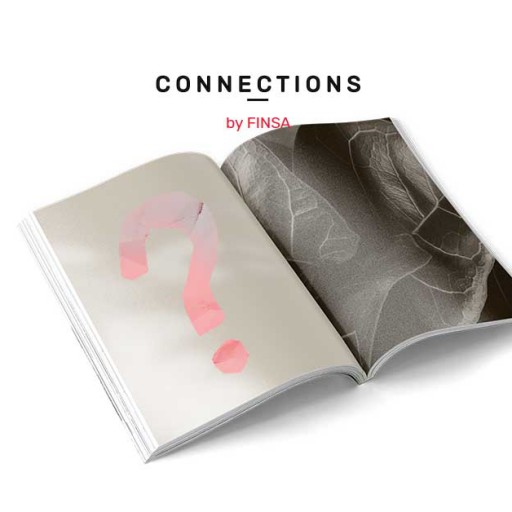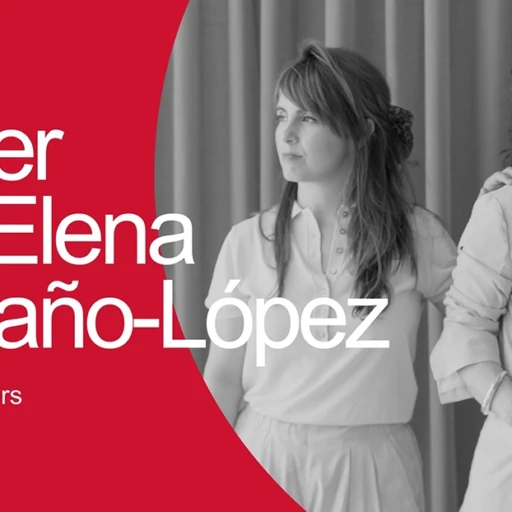Until recently, leaving our pets behind when we had to travel boiled down to two options: finding someone trustworthy to take care of them or looking for a boarding facility.
The scenario has changed radically. At Connections by Finsa, we have previously discussed how pets are gradually inviting us to redefine certain spaces, and we wanted to explore the cutting edge of this reality: hotels (some of them luxury ones) dedicated to our companions.
How has the concept of animal lodging evolved to integrate design, the amenities they need, and the solutions architecture is creating for these four-legged guests? Be careful if you think this might be a trivial topic because the creation of specific spaces for pets is already a tangible opportunity for architects and interior designers around the world.
The luxury experience for cats: Gatosphera
In San Agustín del Guadalix, in the Community of Madrid, Gatosphera has been a dedicated hotel for cats for over a decade, offering everything from family rooms to luxury suites.
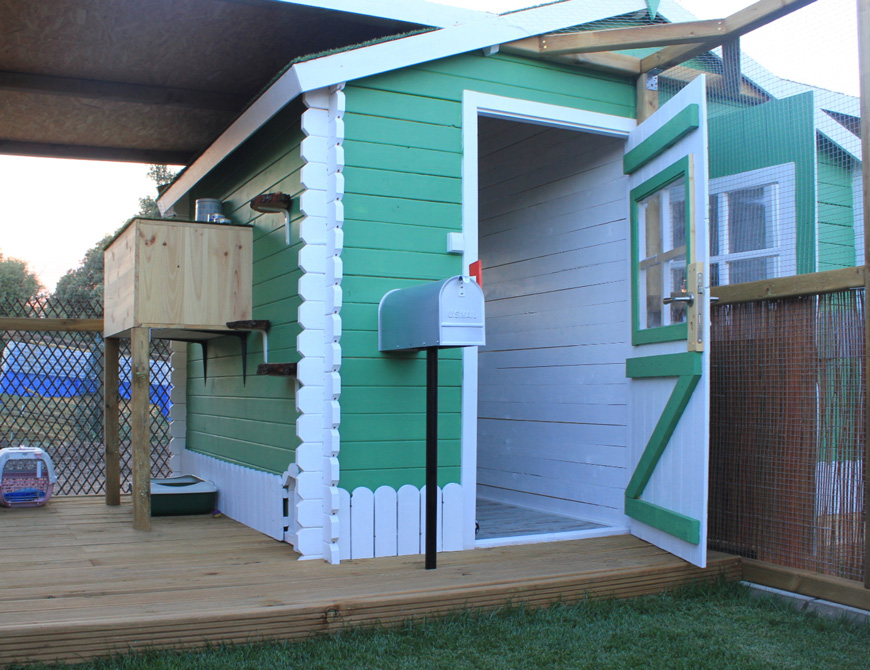
At the forefront is Almudena Díaz-Miguel, who attends to us while finishing accommodating her guests. “The truth is, we are never short of work and have many recurring clients. It must be understood that until recently, the usual practice with cats was to leave them at home and have a family member visit them, but that awareness has changed, and people who live with a cat greatly appreciate how they are cared for here”.
The care is literal, as the hotel has a space to look after cats undergoing postoperative recovery, in addition to various recreational areas with different environments.
“The concept of the establishment is to equate it to a hotel for humans, offering different types of accommodation: standard rooms, junior suites, deluxe suites, and family bungalows, designed for those with multiple cats”, Almudena tells us.
“The idea came about because I have a friend with a canine boarding facility who told me that many people wanted to leave their cats with him… And it was complicated with the dogs, so I got to work”, she says.
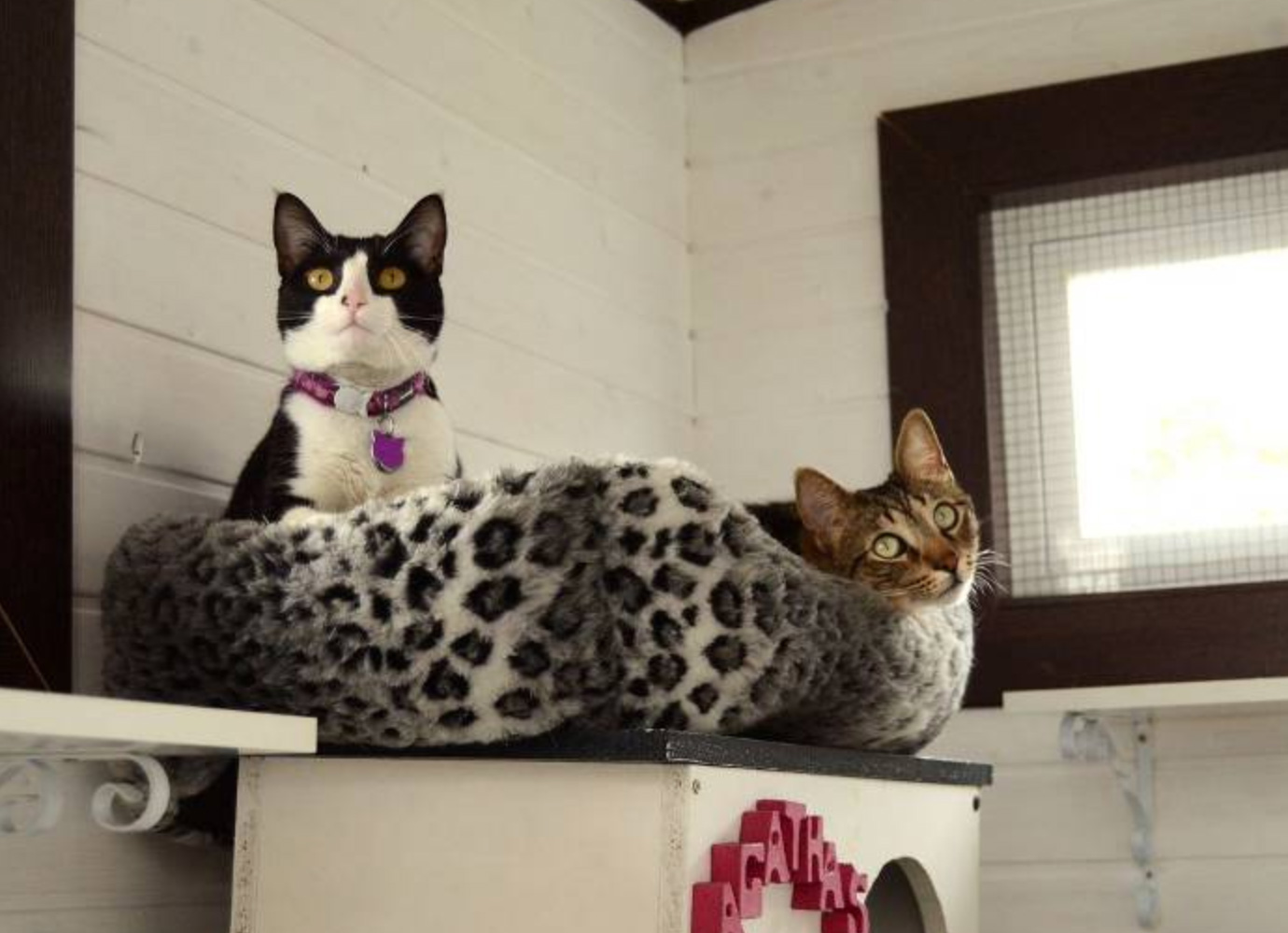
No detail is missing. The hotel is organized into various areas to facilitate clients’ placement of their pets during their stay. These include the Resort, the Village, and the Oasis, Caribbean-style themed. Additionally, the Cocoon area is specially designed for older cats, located near the office and equipped with numerous ramps to facilitate movement for those suffering from arthritis or joint problems, offering easy access in all its spaces.
In the beginning, everything started by adapting a greenhouse that Almudena had at her residence. Over time, she has acquired and set up new wooden houses that serve as accommodations for the felines. “Initially, standard rooms and suites were built in the central area, followed by colorful cabins, all with access to gardens, heating, water fountains, and thermal beds. Each accommodation is meticulously decorated to make the cats feel like they are on vacation”, the owner explains, who immersed herself in numerous references to similar spaces in the UK and the USA.
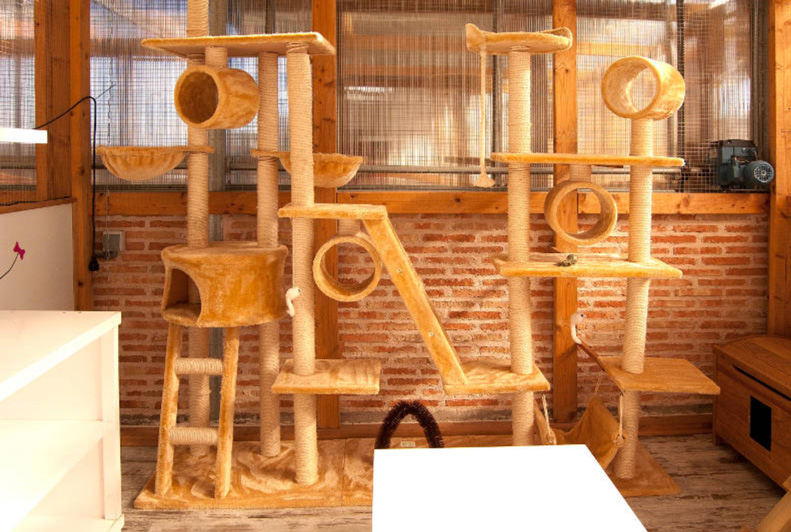
Currently, they house 40 cats between the indoor and outdoor accommodations, “although it all depends on whether they come in groups, as we house them by families to try to make them feel at home. Everyone knows cats are territorial and don’t take well to changes, so it’s easy to empathize and for people living with them to appreciate our service”, she notes.
In these years, she has never lacked work -“we are always fully booked; many clients travel frequently and already consider us their cats’ second home”- nor challenges in expanding the place. “We covered the greenhouse and protected it by insulating it with rock wool. Then we started with the bungalows, looking for new ideas for cat spaces. I research a lot, but there is still much to do in creating and adapting environments for pets”, Almudena reflects.
Leaving the cats so well cared for, one inevitably wonders… What about the dogs?
From the first dog hotels in Spain to Raulino Silva’s canine and feline hotel
In Torrent, near Valencia, is Hotel Canino La Villa, also equipped with rooms, even with furniture. “We do not have availability for the coming months”, says its manager, explaining that their proposal is very appealing to dog owners. “This is like a hotel for people”, he reiterates.
In the UK, the options are broader: the Canine Cottages portal specializes in these establishments. It’s like an Airbnb for canine accommodations.
But if we want to look for outstanding examples, one of the most striking is the Canine and Feline Hotel, designed by Portuguese architect Raulino Silva. Located in an old vineyard in Parada, Portugal, the complex consists of three blocks with clear and modern lines connected by external corridors. This design has not only been nominated for the 2020 Dezeen Awards hospitality building of the year but also represents a milestone in the fusion of functionality and architectural aesthetics.
Ver esta publicación en Instagram
The facilities include a pet grooming salon and a pool designed specifically for the enjoyment of dogs and cats. Additionally, attention to detail is evident in every corner of the hotel: from the indoor play areas illuminated by skylights to the rooms with large windows that allow constant connection with the natural surroundings.
Functional and aesthetic design in pet accommodations
Integrating functional needs with high-quality aesthetics is a challenge in creating spaces for animals. We find some common patterns. Interiors, designed with self-leveling epoxy floors and microcement bathing areas, are not only easy to clean but also aesthetically pleasing.
This underscores how pet care may require innovative solutions that combine functionality and style, creating places that are both operational and beautiful. There is a clear potential for developing a subdiscipline within architecture and interior design focused exclusively on pet accommodation and care.
This niche could open new options for innovation in materials, habitat use, and adaptation to animal behavior, challenging professionals to think differently about how living spaces are designed and used, so far focused mainly on two-legged beings.


